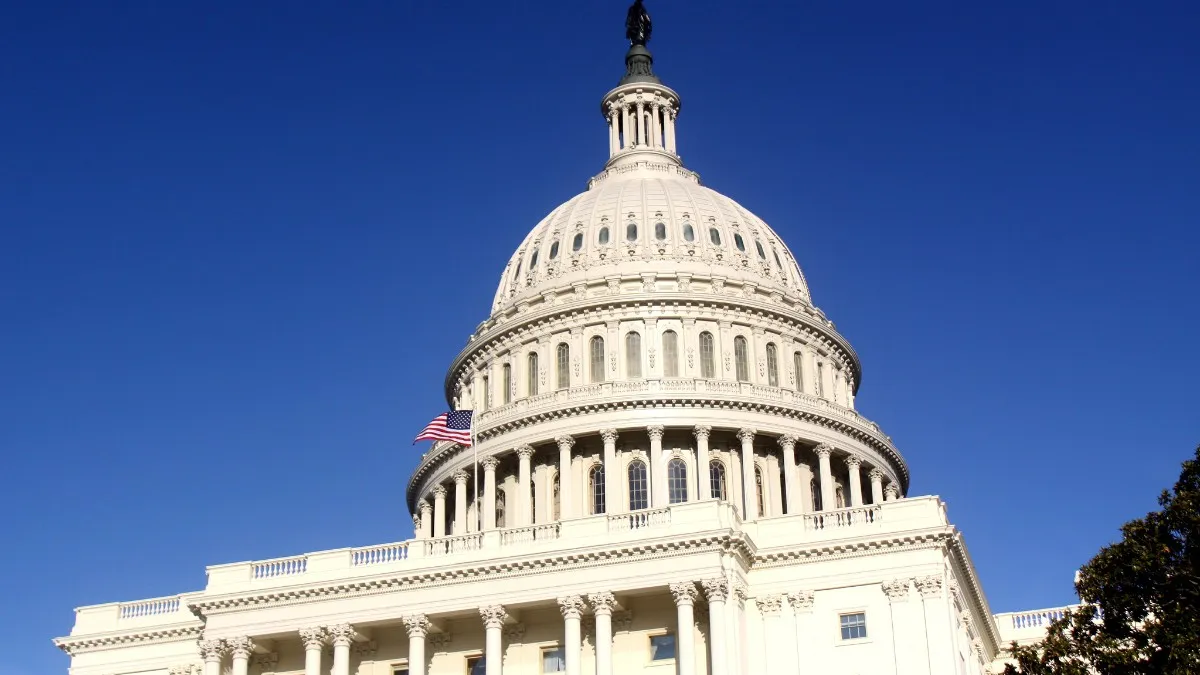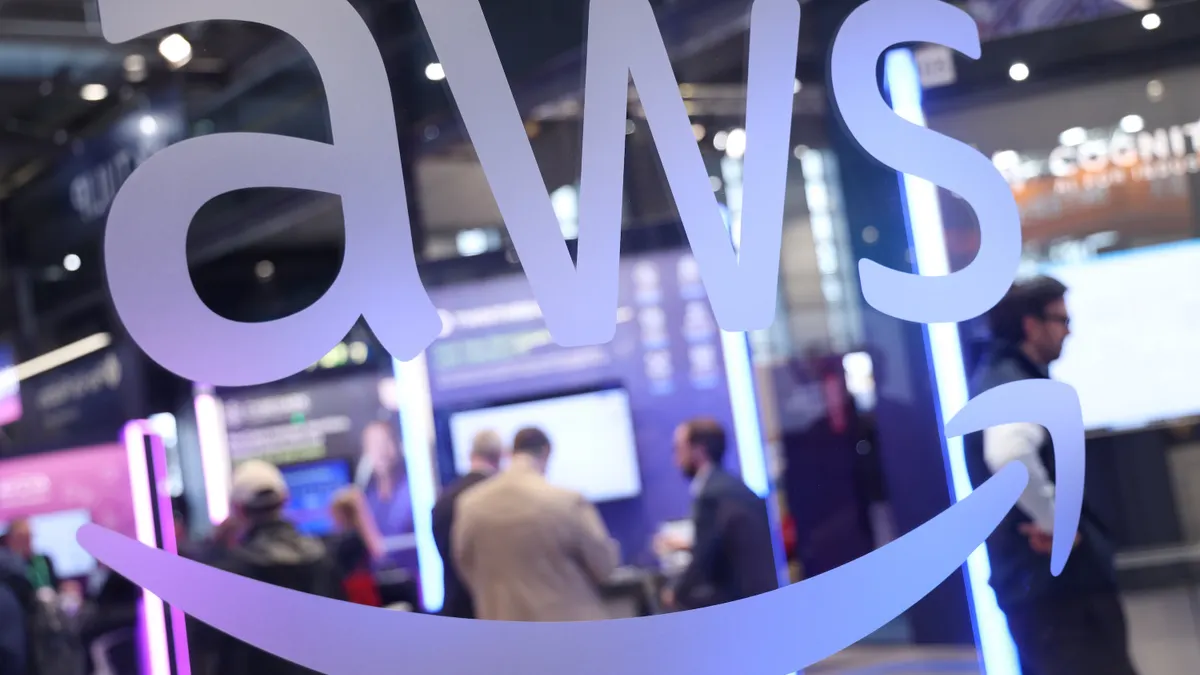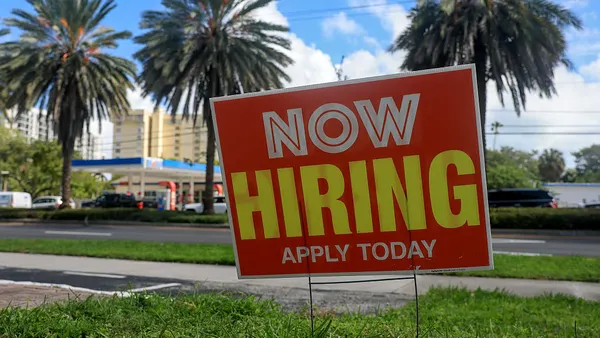IT leaders face pressure from all departments to support technology frameworks and business continuity.
But for positions in the U.S. government, technologists have to manage tax dollars and keep services running 24/7.
"You have to be incredibly grounded in what you're being asked to do and ultimately you serve on behalf of the pleasure of the president and on behalf of the citizens of the United States," former White House CIO Brook Colangelo said of public sector service in an interview with CIO Dive earlier this month.
At the highest level of federal IT leadership, CIOs are appointed but many executives are career civil servants or members of industry leaving the private sector to serve the public.
With the weight of the country's IT infrastructure on their shoulders, deciding to work in government technology requires a mission-driven mindset ready to overcome bureaucratic hurdles. Individuals with a private sector background bring a unique value-add to federal technology leadership positions, including and beyond the role of the CIO.
Bringing in industry experience adds innovative perspectives, ideas and insights to the federal government way of working, according to Tony Scott, former federal CIO.
How to get a federal IT leadership job
While the government tapped Colangelo and Scott to fill the high-profile federal roles, IT leadership positions with the federal government are only an application away.
Many federal CIOs spent several years in government IT before their current roles, but it's not uncommon for the public sector to bring in members from industry:
-
Acting CIO at the Department of Justice Melinda Rogers transitioned from Equifax
-
State Department CIO Stuart McGuigan joined from Johnson & Johnson
-
Department of Energy CIO Rocky Campione came from Planet Technologies
-
OPM CIO Clare Martorana spent several years at companies such as WebMD before joining the federal government.
Because there's "a real need for technology experience and talent inside the government," the federal government pushes to bring new people into the sector, according to Colangelo.
It's not a stretch to apply. Cybersecurity and Infrastructure Security Agency (CISA) is taking applications for a CIO position on the USAJobs site through Dec. 4. For this position, CISA lists "no positive education requirement" (meaning no minimum education standard) but qualified candidates must meet mandatory technical qualifications such as ability to develop policy, knowledge of laws and experience with federal acquisition regulations.
When considering employment with the federal government, soft skills also matter. The ability to work under a time crunch, maximize impact in a short amount of time, navigate a complex organization and bring a diversity of experience are prerequisites to government service, Colangelo said.
For senior executive service positions with the federal government, including CIO positions, job openings list professional skills as competencies under "executive core qualifications." In the current CIO opening at CISA, qualified candidates must have leadership experience, a results-driven attitude, business acumen and the ability to build coalitions.
Though the political landscape is shifting in Washington, federal IT largely strays away from partisanship. Political appointees may be expected to turn in a resignation at the end of an administration, but it's not unheard of for departmentwide IT leader to stay on — such as National Archives and Records Administration CIO Swarnali Haldar who's been in the position since 2014.
Pay cut likely, mission-focus drives retention
Facing resource constraints, the government can't offer the same pay for IT positions available in the private sector, but for many, incentives come from the mission.
Executives and senior level positions with the federal government earn on average between $160,100 and $219,200, depending on payscale level, according to FederalPay.org. Current openings list the salary range for federal CIOs and related positions at $96,970 to $197,300 per year.
While a six figure salary is nothing to sneeze at, a 2018 analysis of the 500 largest U.S. companies by CIO discovered total compensation in the multi-millions — anywhere from about 10 times to over 65 times more than the federal figures. This disparity causes trouble for federal officials trying to hire against private sector competition, but the choice is obvious for some interested in making a difference.
"I believe in making an impact in any job and career that you do and I think there is no greater impact than a role in government," Colangelo said.
After leading the Obama-Biden transition team's technology needs, the Obama administration tapped Colangelo for the White House CIO role. Believing technology is a "great tool and enabler" for making an impact, especially in the government, Colangelo accepted the position.
In four years, Colangelo said he worked to make Barack Obama the first digital president and the government more open and transparent through tech efforts.
In 2015, Scott left big name industry CIO positions at companies, including VMware, Microsoft and Disney, to pursue federal service. Representatives from the administration heard Scott speak during a presentation on diversity hiring in Detroit and the bipartisan push to fix federal IT was an encouraging sign it was time to give the public sector a try, according to Scott.
"As it turned out, we were able to do quite a lot in just two short years," Scott said. "Now, I'm very glad I did it and it was probably one of the best experiences I've ever had."





















